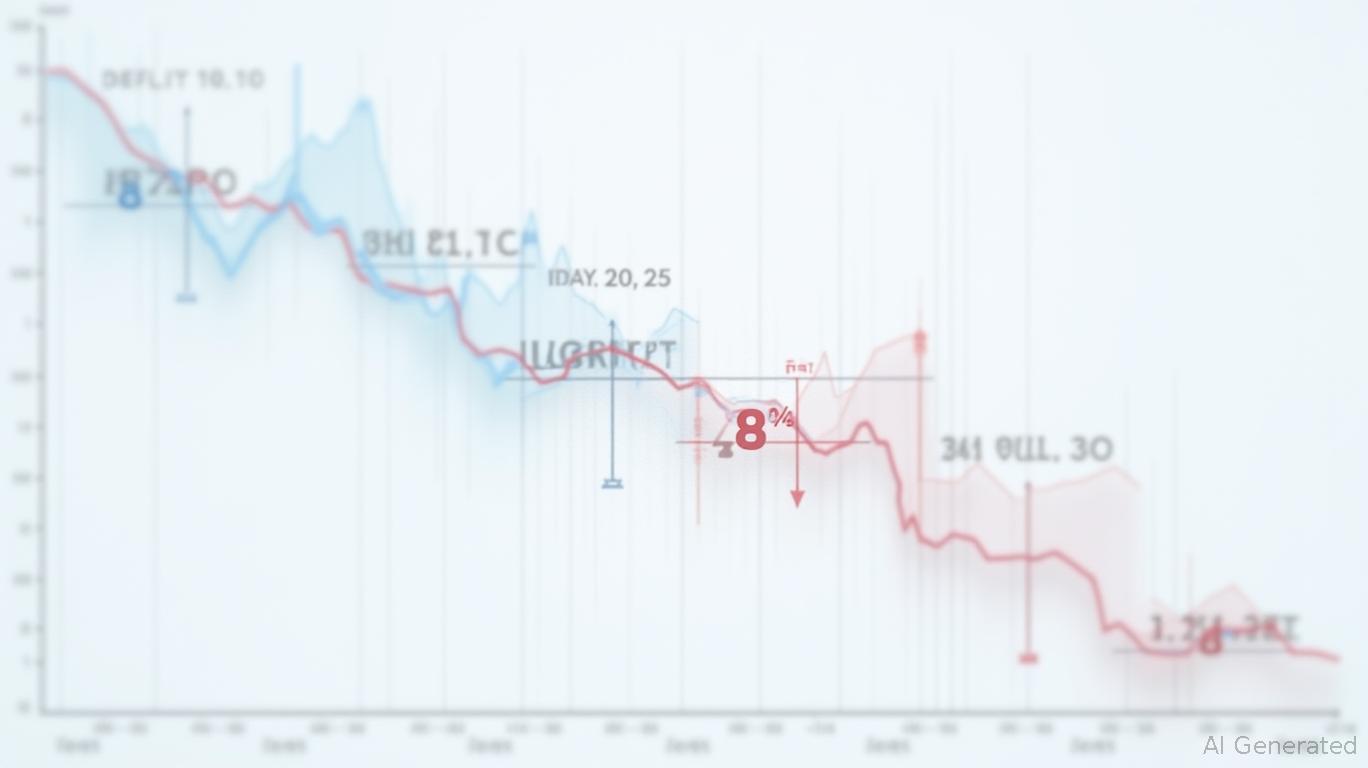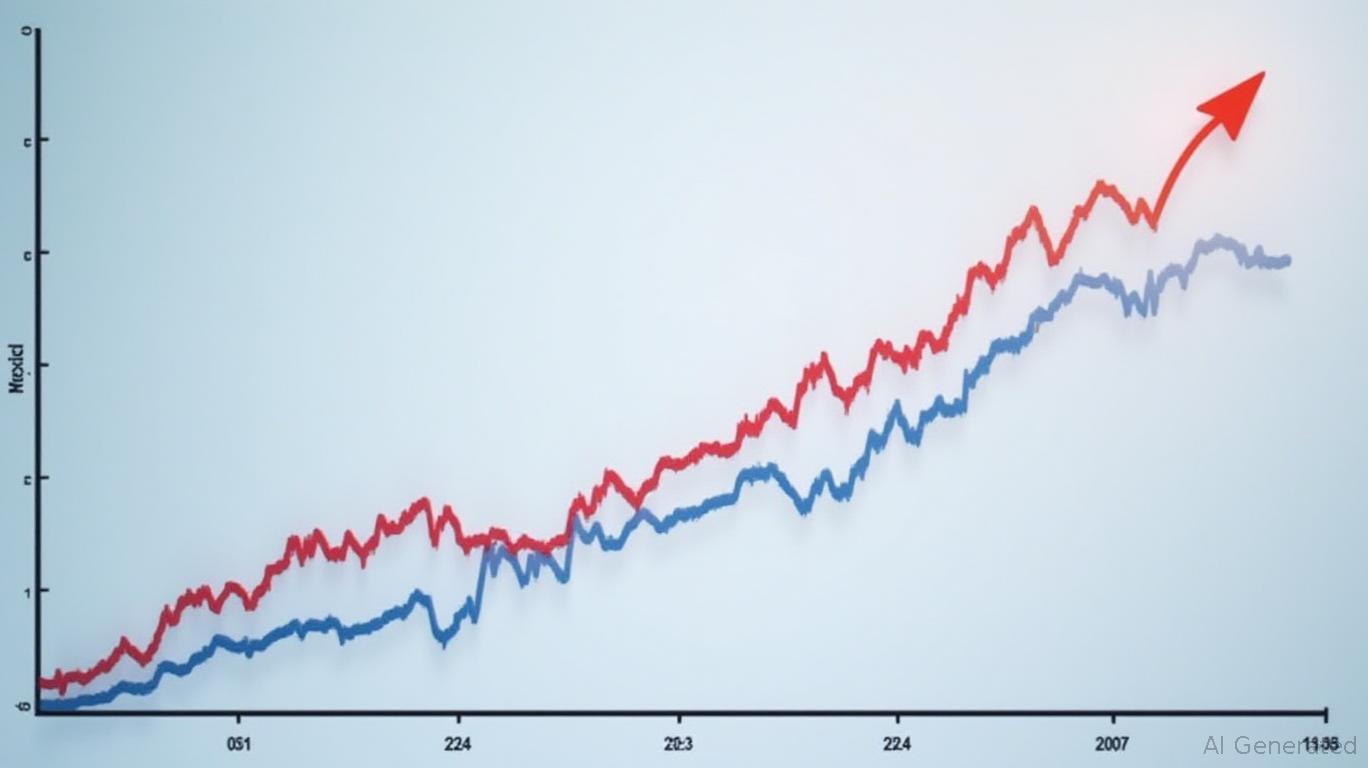Mexico's Inflation Slowdown: Unlocking Larger Rate Cuts
Friday, Nov 22, 2024 9:08 am ET
Mexico's inflation rate has been steadily decreasing, with core inflation easing for the 15th consecutive month to 4.37% in April 2024, the lowest since May 2021. This trend, coupled with a stable GDP growth of 3.2% in 2023, has led the Bank of Mexico (Banxico) to lower its benchmark interest rate by 25 basis points for a third straight meeting, signaling further possible rate cuts. This decision reflects Banxico's confidence in the improving inflation outlook and its commitment to supporting economic growth. With Mexico's stable macroeconomic framework and solid manufacturing base, the potential for larger rate cuts could boost investment, consumption, and economic growth, opening doors to new opportunities.
The slowdown in Mexico's inflation rate is a positive sign for the country's economy. This trend, combined with the bank's recent interest rate cuts, indicates that the Mexican economy is on a path to stable growth. The Central Bank of Mexico has been actively managing the country's inflation rate, and its recent actions suggest a commitment to maintaining this stability.
The global economic uncertainties, particularly the U.S.-Mexico trade relationship, play a significant role in Mexico's economic prospects. The peso has weakened due to post-election reforms and U.S. President Trump's tariff threats, affecting Banxico's rate cuts. Despite this, Mexico's economy grew by 3.2% in 2023, driven by services, and its GDP expanded by 1.6% yearly in Q1 2024, indicating a resilient economy.
Mexico's stable macroeconomic framework and resilient economy have been underpinned by consistent policy reforms and a favorable business environment. With inflation slowing from double-digit highs to a 4.65% annual rate in April 2024 and GDP growth exceeding 3% in 2023, the country presents an attractive investment opportunity. The Bank of Mexico's (Banxico) recent 25 basis point interest rate cut, the third consecutive reduction, signals a positive shift in monetary policy, further boosting investor confidence.
As Mexico continues to manage its inflation rate and maintain economic stability, investors should pay close attention to the country's growth prospects. The combination of a stable macroeconomic framework, solid manufacturing base, and slowing inflation opens the door to larger rate cuts, which could further boost investment, consumption, and economic growth.
The slowdown in Mexico's inflation rate is a positive sign for the country's economy. This trend, combined with the bank's recent interest rate cuts, indicates that the Mexican economy is on a path to stable growth. The Central Bank of Mexico has been actively managing the country's inflation rate, and its recent actions suggest a commitment to maintaining this stability.
The global economic uncertainties, particularly the U.S.-Mexico trade relationship, play a significant role in Mexico's economic prospects. The peso has weakened due to post-election reforms and U.S. President Trump's tariff threats, affecting Banxico's rate cuts. Despite this, Mexico's economy grew by 3.2% in 2023, driven by services, and its GDP expanded by 1.6% yearly in Q1 2024, indicating a resilient economy.
Mexico's stable macroeconomic framework and resilient economy have been underpinned by consistent policy reforms and a favorable business environment. With inflation slowing from double-digit highs to a 4.65% annual rate in April 2024 and GDP growth exceeding 3% in 2023, the country presents an attractive investment opportunity. The Bank of Mexico's (Banxico) recent 25 basis point interest rate cut, the third consecutive reduction, signals a positive shift in monetary policy, further boosting investor confidence.
As Mexico continues to manage its inflation rate and maintain economic stability, investors should pay close attention to the country's growth prospects. The combination of a stable macroeconomic framework, solid manufacturing base, and slowing inflation opens the door to larger rate cuts, which could further boost investment, consumption, and economic growth.














